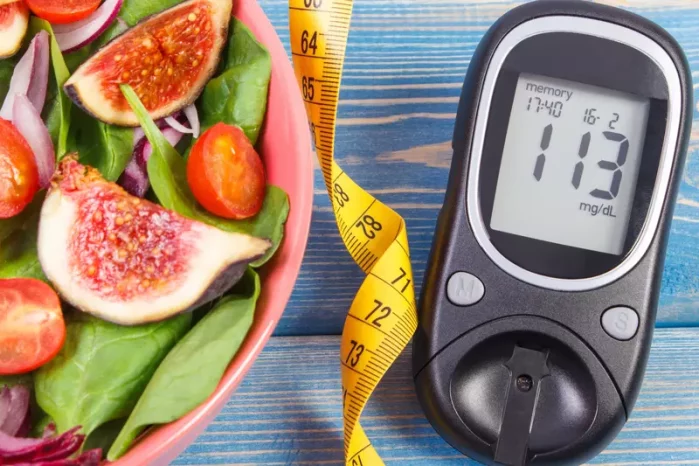Breakfast is often hailed as the most important meal of the day, setting the tone for energy levels and overall well-being. For individuals managing diabetes, breakfast takes on added significance, serving as a crucial opportunity to stabilize blood sugar levels and support overall health. Crafting a diabetes-friendly breakfast involves a strategic approach that considers nutritional balance, portion control, and cultural preferences. In this article, we delve into the intricacies of breakfast choices for diabetics, offering a wealth of information ranging from macronutrient importance to practical meal ideas and recipes tailored to diverse tastes.
Nutritional Information: Understanding Macronutrients and Blood Sugar
The foundation of a diabetes-friendly breakfast lies in the careful selection of macronutrients—protein, fiber, and healthy fats—that play pivotal roles in regulating blood sugar levels and promoting satiety.
Protein: Incorporating protein-rich foods into breakfast can help stabilize blood sugar levels by slowing down the absorption of carbohydrates. Eggs, Greek yogurt, cottage cheese, and lean meats are excellent sources of protein that provide sustained energy throughout the morning.
Fiber: Fiber is a diabetic’s ally, as it helps control blood sugar levels and improves digestion. Opt for whole grains like oats, quinoa, and barley, as well as fibrous fruits and vegetables such as berries, apples, and spinach. These foods not only contribute to stable blood sugar but also enhance feelings of fullness, preventing overeating later in the day.
Healthy Fats: While moderation is key, incorporating healthy fats into breakfast can aid in blood sugar management and promote heart health. Avocados, nuts, seeds, and olive oil are rich sources of monounsaturated and polyunsaturated fats that can be added to meals in controlled portions.
Carbohydrate Counting: Navigating Complex Carbs and Simple Sugars
Carbohydrate counting is a fundamental aspect of diabetes management, empowering individuals to make informed choices about their dietary intake. When selecting breakfast foods, prioritize complex carbohydrates over simple sugars to prevent rapid spikes in blood sugar levels.
Complex Carbs: Choose whole grains such as oats, whole wheat bread, and brown rice, which contain fiber and essential nutrients while releasing glucose into the bloodstream at a steadier pace. Incorporating complex carbs into breakfast ensures sustained energy levels without causing abrupt blood sugar fluctuations.
Simple Sugars: Minimize the consumption of refined carbohydrates and sugary breakfast cereals, pastries, and sweetened beverages, as these can lead to rapid spikes and crashes in blood sugar levels. Opt for natural sweeteners like stevia or small amounts of honey or maple syrup if sweetness is desired.
Meal Ideas: Balancing Flavor and Functionality
Crafting diabetes-friendly breakfasts can be both nutritious and flavorful, offering a variety of options to suit individual preferences and cultural tastes.
Eggs: Start the day with a protein-packed breakfast by preparing scrambled eggs with sautéed vegetables or a vegetable omelet. Pair with whole grain toast or a side of fresh fruit for added fiber and nutrients.
Greek Yogurt with Berries: Enjoy a creamy and satisfying breakfast by topping Greek yogurt with a handful of mixed berries and a sprinkle of nuts or seeds for added texture and healthy fats.
Overnight Chia Seed Pudding: Prepare a delicious and convenient breakfast ahead of time by soaking chia seeds in almond milk overnight. In the morning, top with sliced fruit and a drizzle of nut butter for a nutritious and filling meal.
Recipes: Simple and Delicious Breakfast Options
Here are easy-to-follow recipes that incorporate the recommended foods, providing inspiration for wholesome breakfasts that support blood sugar management:
Vegetable Frittata:
Ingredients: Eggs, bell peppers, spinach, onions, tomatoes, feta cheese, olive oil.
Instructions: Sauté vegetables in olive oil, pour beaten eggs over the mixture, and cook until set. Sprinkle with feta cheese before serving.
Oatmeal with Almond Butter and Banana:
Ingredients: Rolled oats, almond milk, almond butter, banana, cinnamon.
Instructions: Cook oats with almond milk, stir in almond butter, and top with sliced banana and a dash of cinnamon.
Avocado Toast with Poached Egg:
Ingredients: Whole grain bread, avocado, eggs, lemon juice, red pepper flakes.
Instructions: Mash avocado with lemon juice and red pepper flakes, spread on toasted bread, and top with a poached egg.
Portion Control: Finding the Right Balance
In managing diabetes, portion control is paramount to regulating blood sugar levels and maintaining a healthy weight. Be mindful of portion sizes when preparing breakfast, using measuring cups, and food scales as needed to ensure accuracy. Aim to fill half of your plate with non-starchy vegetables, a quarter with lean protein, and a quarter with complex carbohydrates or healthy fats.
Glycemic Index: Harnessing the Power of Food Choices
Understanding the glycemic index (GI) can aid in selecting appropriate foods that have minimal impact on blood sugar levels. Foods with a low GI, such as legumes, non-starchy vegetables, and most fruits, are digested more slowly, resulting in gradual increases in blood glucose levels. Incorporating low-GI foods into breakfast can promote stable energy levels and long-term blood sugar control.
Customization Tips: Tailoring Breakfast to Individual Preferences
One of the joys of meal preparation is the ability to customize dishes according to personal tastes and dietary re cooking methods to create breakfasts that are both diabetes-friendly and satisfying. Consider cultural breakfast traditions and adapt recipes to incorporate familiar flavors while prioritizing nutrient-rich ingredients.
Practical Tips: Streamlining Breakfast Preparation
Efficiency is key when it comes to preparing breakfast, especially on busy mornings. Take advantage of meal prep techniques such as batch cooking and overnight refrigeration to streamline the breakfast routine. Prepare ingredients in advance, portion out servings, and assemble meals ahead of time to minimize stress and ensure consistency in dietary choices.
Health Benefits: Nourishing the Body and Mind
Each recommended breakfast food offers a unique array of health benefits that extend beyond blood sugar management:
Eggs are a rich source of protein and essential nutrients, supporting muscle health and cognitive function.
Greek yogurt provides probiotics for gut health, calcium for bone strength, and protein for sustained energy.
Chia seeds are packed with omega-3 fatty acids, antioxidants, and fiber, promoting heart health and digestive regularity.
Cultural Considerations: Embracing Diversity in Breakfast Choices
Acknowledging cultural diversity enriches the breakfast experience, offering a wealth of flavors, textures, and traditions to explore. Adapt traditional breakfast dishes to align with diabetes-friendly guidelines, substituting refined grains with whole grains, reducing added sugars, and incorporating lean proteins and fresh produce. Celebrate cultural heritage through food while prioritizing health and well-being.
Conclusion
Crafting a diabetes-friendly breakfast involves a harmonious balance of nutritional considerations, culinary creativity, and cultural sensitivity. By prioritizing protein, fiber, and healthy fats, choosing complex carbohydrates, practicing portion control, and harnessing the power of the glycemic index, individuals can enjoy delicious and nourishing breakfasts that support blood sugar management and overall health. With practical tips, customizable recipes, and a diverse array of meal ideas, optimizing breakfast for diabetes becomes an enjoyable and empowering journey toward wellness.



























